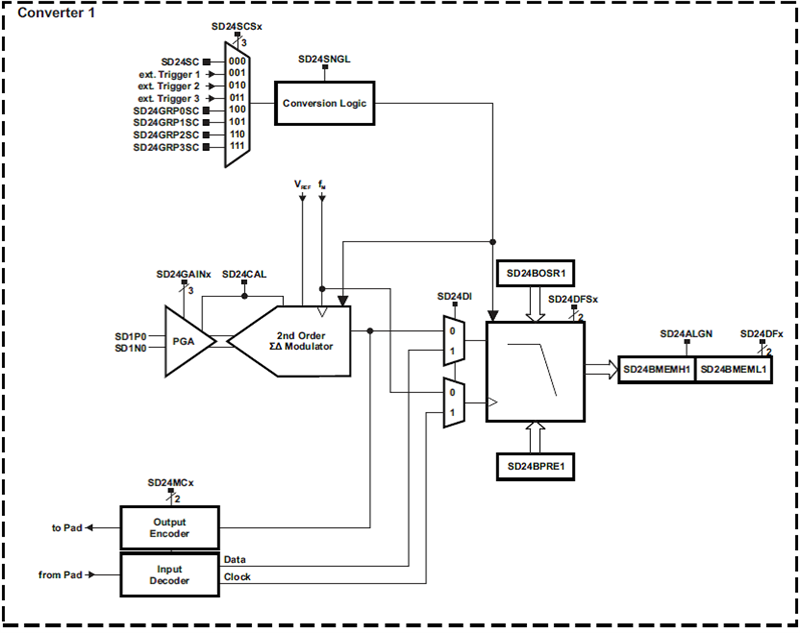Now that we have talked about the advantages of using a shunt, let’s discuss the disadvantages of a shunt and how to overcome them.
One particular disadvantage of using shunts is the resulting power dissipation in the current front-end circuitry. Some standards limit the allowed maximum power dissipation in the current front-end circuitry. As a result, the maximum allowed resistance value of the shunt may be limited for a given maximum current.
Since the maximum allowed resistance value of the shunt can be small, the resulting voltage output of the shunt can also be small. To compensate for the small voltage output of shunts, a gain amplifier is often used to boost the voltage from the shunt to ensure that the maximum voltage output from the shunt is near the maximum input voltage that can be accurately sensed by the analog-to-digital converter (ADC). This gain amplifier can be added externally to the ADC. Alternatively, it could be programmable and integrated within the ADC, as is shown in the below figure of an ultra-low-power MSP430F6736A microcontroller sigma-delta ADC.
MSP430F6736A Sigma Delta Converter with Integrated Programmable Gain Amplifier (PGA)
In selecting the gain of the gain amplifier, the peak voltage fed into ADC (Vin, RMS*Gain*√2) should be maximized under the constraint that it should still be below the maximum voltage that can be accurately sensed. As an alternative to boosting the voltage output from the shunt, a device with a smaller analog input range, such as the AMC1304M05 reinforced isolated delta-sigma modulator with integrated LDO, can be used to sense the voltage drop across the shunt. This is the approach used in the multi-phase energy measurement with isolated shunt sensors (TIDA-00601) TI Design reference design.
Another disadvantage of shunts is that the shunt’s resistance varies with temperature. Therefore, the sensed value of the current and the meteorology parameters dependent on current would also vary with temperature. To alleviate this, shunts should be selected to have a temperature coefficient that is at least lower than the required temperature coefficient needed to maintain the desired accuracy over temperature.
Lastly, shunts do not have isolation so they cannot be used as current sensors for multi-phase systems without using additional circuitry to provide isolation. If a shunt is attempted to be connected to a measuring device and a method for isolation is not provided, the measuring device would have its pins exposed to different phase voltages, which would damage the measuring device. So, how could we solve this limitation? Stay tuned for the next blog in this series to find out.
Additional resources:
- Find out more about our ultra-low-power MSP430F6736A MCU
- Learn more about the AMC1304M05 reinforced isolated delta-sigma modulator with integrated LDO
- Check out the Multi-phase Energy Measurement with Isolated Shunt Sensors Reference Design
- Watch this training video to learn more about our shunt sensors
- Read the rest of this blog series on ditching the current transformer:

